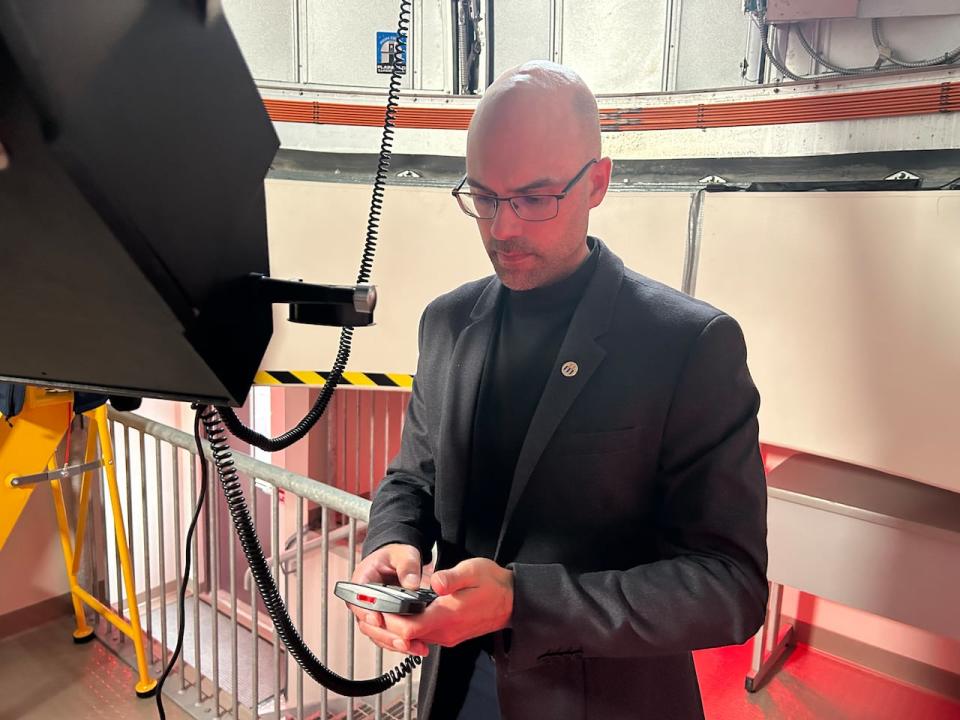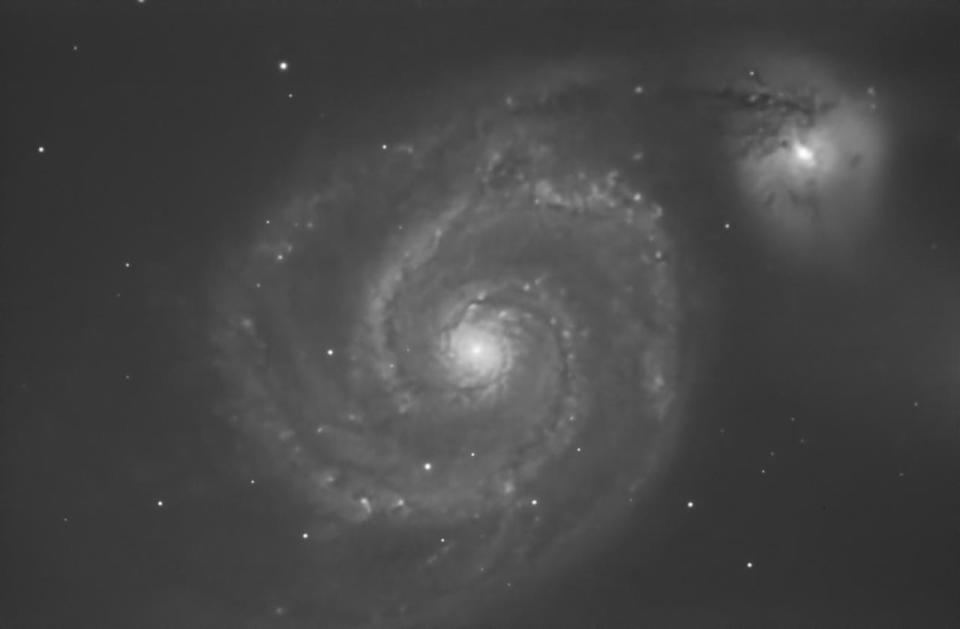A glimpse of the universe from downtown Shippagan
An new observatory in northeastern New Brunswick is widening the lens for space enthusiasts like Pierre Philippe Ferguson.
On the fifth floor of the Irène-Léger pavilion at the Université de Moncton's Shippagan campus, there's a dome with a diameter that measures a little more than four metres.
Inside that dome is a huge telescope with a 40-centimetre lens. To look through it, requires a short climb up a step ladder.
"I have a goal to take as many pictures as I can of the planets and the moons and all that," said Ferguson, who is in charge of the project and a science professor at the university.
The telescope has several attachments including different lenses, filters and cameras that can produce high-quality images.

Stargazers can calibrate the telescope via remote control to scroll and click on planets or stars for viewing, Ferguson said.
"We have a catalogue. Everything's calibrated, it's all automatic," he said.
WATCH | The lens that can see a million light years away:
David Simard, president of the Arthur-William-Landry astronomy club in Shippagan, said until now stargazers gathered on beaches or fields to set up their personal telescopes.
But this high-tech experience will open doors to conversations about space in the community.
"As soon as the ball is going to start rolling, you'll see a lot more people coming in, a lot more because they want to put their eyes into it," said Simard.
Simard, who has been watching the sky since the age of 14, says watching the stars is not like going to a zoo or going rock climbing because the sky is open to all and always available.
"Don't forget, this is the best therapy that you could have ever had, if you were feeling depressed or whatever," he said, encouraging people to experience it.
"Just going outside and enjoying yourself."

The U de M campus in Moncton has had a similar observatory for more than two decades and hosts several public observation sessions. Ferguson said he has similar plans for Shippagan.
"We want to make sure we have a big nice calendar, where people come here and observe, especially when there's special things going on in the sky or some people who want just to come and observe a certain planet with our telescope."
Ferguson said the goal isn't to focus on research in astronomy, but to facilitate learning by connecting the public with outer space.
"Not everyone knows how the universe works, and it's a complicated system," he said.
"So I believe they can learn a little bit more about the universe in general."

Simard said the possibilities of the new observatory telescope are endless. It can even be programmed so people can use their home computers to see what a telescope operator is watching.
People who want to discover the moon for instance, can choose from a list of options they can dial up to see, such as mountains, valleys, craters and landing sites.
"Even if you start at a young age, and you die at 110 years old, you're never going to be able to see everything."
"There's so many things," he said.


